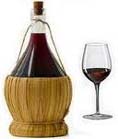
Home...> Articles 7...> How To Make Jam
|
|
How To Make Jam
|
|
|
Learning how to make jam
Discovering how to make jam is very enjoyable. Jams may be divided into two categories, ordinary jam which is made basically from sugar and fresh fruit (or, in the case of jelly, only the juice of the fruit is used) boiled together until thick, and conserves (or preserves) in which whole fruit is preserved in heavy syrup.
The consistency of a good conserve is usually a little more syrupy than ordinary jam and much sweeter and richer in flavour.
Conserves were more popular over a hundred years ago (when fruit bottling as we know it was little heard of) as whole or sliced fruit could be preserved by this method. Conserves used to be eaten with a spoon - as they still are in Europe today - rather than spread on bread and butter.
General jam making rules
1. Use dry, barely ripe fruit and either preserving sugar or granulated sugar. This improves the colour and keeping quality of the preserves.
2. Pick over the fruit and wash or wipe it, according to type.
3. Warm the sugar before adding it to the boiling fruit to prevent any lowering of the temperature and consequent overcooking of the jam. Soft fruit gathered fresh from the garden will need less preliminary cooking than bought fruit.
4. When sugar is completely dissolved, but not before, boil briskly, and stir slowly and gently until the jam is ready to set. Do not boil for too long as this darkens the colour and spoils the flavour of the jam.
To test for setting
Remove pan from the heat, put a little jam on a cold plate and cool it quickly. Run your little finger through the centre and, if the jam is ready, it will crinkle slightly and remain in two separate portions. It will also form a firm drop on the finger.
5. Skim off the frothy scum, if necessary, towards the end of cooking only; continuous skimming is unnecessary and wasteful.
6. The jam jars should be perfectly clean, dry and warmed before filling. Fill them quite full to allow for any shrinkage. If you are using strawberries or cherries, leave the jam to stand in the pan for 20-30 minutes to thicken, then stir up and pour into jam jars. Otherwise the fruit might rise in the jars and spoil the jam's appearance.
7. Wipe the outside of the filled jars carefully with a cloth wrung out in very hot water; cover surface of jam with wax paper discs; seal tightly with transparent film or parchment jam pot covers and tie down with elastic bands or string. Label and store in a cool dry place. Packets of jam top sets are available from household department stores and at stationery counters. Jam may be covered either when very hot or quite cool.
8. If you are using fruit with a very low pectin content, it is advisable to use one of the following to ensure that your jam will set; a) commercially prepared pectin; b) the acid juice of gooseberries, apples or redcurrants; c) tartaric or citric acid, either in the form of powder dissolved in a little water, or as lemon juice. Setting power depends on the amount of pectin, a natural gum-like substance found in fruit. In strawberries, raspberries and cherries there is only a little, but in blackcurrants, redcurrants, and gooseberries it is plentiful. In any fruit the amount of pectin is greater when the fruit is slightly under-ripe.
Page 2 of this Italian Traditional Food article can be found on the next page.
Page 1 Next >>
- fish
- sauce
- italian
- italian traditional food
- olive oil
- bread
- pasta
- cook
- dish
- food
- vegetables
- dessert
- recipes
- cooking
- meal
- traditional
- herbs
- cheese
- recipe
- meat

Copyright © 2009 - . All Rights Reserved Worldwide. Italian Traditional Food
You may not reprint articles from this website without the written permission of the site owner.
Disclaimer: Articles on this Website are provided for information purposes only. Italiantraditionalfood.com does not accept any responsibility or liability for the use or misuse of the article content on this site or reliance by any person on the site's contents.
|

Latest Articles
|
|
COMMENTS 'Great recipes and a great site...' 'At long last, a recipe site that delivers good basic food...' 'Tasty and easy to make recipes. What more can you ask for?...' 'Please keep on providing these rustic recipes as I enjoyed them very much....' 'Not only some great recipes but also some great articles. Thanks." 'What a good idea to provide these recipes. Keep up the good work.' 'Lots of very intresting articles on all aspects of the Italian lifestyle...' 'Wishing you every success with your great new recipe site.." 'Good to see some authentic Italian rustic recipes..." 'The step-by-step recipes are very easy to follow. Thank you.' 'It is so much easier to follow the Italian food recipes thanks to the step by step photos." '...thank you for publishing this selection of rural dishes. They are fast becoming part of my staple diet.' |
Copyright © 2009 - . All Rights Reserved Worldwide. Italian Traditional Food
 Digg
Digg Stumbleupon
Stumbleupon Google Bookmarks
Google Bookmarks Delicious
Delicious Twitter
Twitter Facebook
Facebook Yahoo My Web
Yahoo My Web Reddit
Reddit